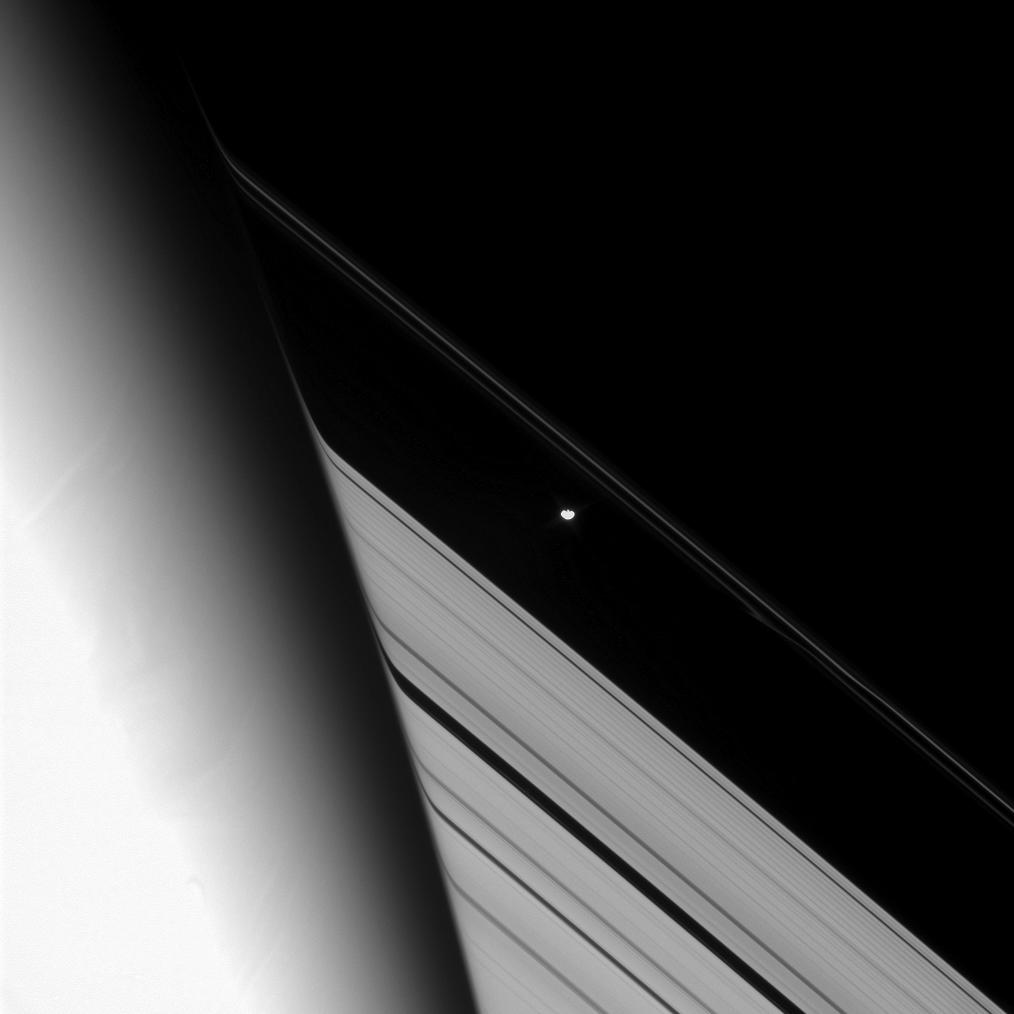Tracking the Shepherd

| PIA Number | PIA10463 |
|---|---|
| Language |
|
The Cassini spacecraft tracks the shepherd moon Prometheus as it orbits Saturn.
This image is part of a sequence designed to monitor the evolution of a streamer of material in the F ring for nearly a full orbit, as it follows Prometheus. Here, Prometheus is just about to pass behind the planet. The faint streamer lies below and to the right of Prometheus (86 kilometers, or 53 miles across), in the faint, inner strand of the F ring.
See Soft Collision for a movie sequence of Cassini images that shows Prometheus creating a streamer.
This view looks toward the unilluminated side of the rings from about 21 degrees above the ringplane. Saturn's upper atmosphere distorts the image of the rings near the planet's limb.
The image was taken in visible light with the Cassini spacecraft narrow-angle camera on Aug. 9, 2008. The view was acquired at a distance of approximately 1.3 million kilometers (804,000 miles) from Prometheus. Image scale is 8 kilometers (5 miles) per pixel.
The Cassini-Huygens mission is a cooperative project of NASA, the European Space Agency and the Italian Space Agency. The Jet Propulsion Laboratory, a division of the California Institute of Technology in Pasadena, manages the mission for NASA's Science Mission Directorate, Washington, D.C. The Cassini orbiter and its two onboard cameras were designed, developed and assembled at JPL. The imaging operations center is based at the Space Science Institute in Boulder, Colo.
For more information about the Cassini-Huygens mission visit http://saturn.jpl.nasa.gov . The Cassini imaging team homepage is at http://ciclops.org .
Credit: NASA/JPL/Space Science Institute
